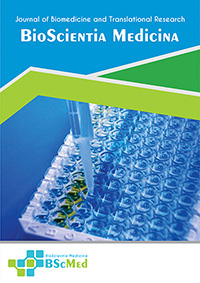Main Article Content
Abstract
Background: Tinea capitis, a dermatophytosis of the scalp, is a leading cause of hair loss in children. Its successful management hinges on understanding its complex etiology, including host susceptibility and pathogen virulence. Microsporum canis, a zoophilic fungus, is a primary causative agent, yet its transmission pathways and diagnostic markers are not fully elucidated.
Case presentation: A 3-year-old female presented with a two-week history of progressive, pruritic alopecia. Clinical history was notable for the absence of animal contact but revealed significant environmental exposure at a hair salon. Dermatological examination showed multiple, well-demarcated, alopecic patches with fine scaling, characteristic of gray patch tinea capitis. While Wood's lamp examination was negative, trichoscopy revealed comma hairs and Morse code-like hairs, suggesting fungal infection. Microscopic examination of hair shafts confirmed an ectothrix invasion pattern, and fungal culture definitively identified Microsporum canis. The patient achieved complete resolution following a six-week course of oral griseofulvin and adjuvant topical ketoconazole.
Conclusion: This case demonstrates that indirect fomite transmission from environmental reservoirs like hair salons is a critical risk factor for zoophilic tinea capitis, independent of animal contact. It further establishes trichoscopy as an essential tool for accurate, rapid diagnosis when classic signs, such as Wood's lamp fluorescence, are absent, thereby optimizing patient management and public health outcomes.
Keywords
Article Details
As our aim is to disseminate original research article, hence the publishing right is a necessary one. The publishing right is needed in order to reach the agreement between the author and publisher. As the journal is fully open access, the authors will sign an exclusive license agreement.
The authors have the right to:
- Share their article in the same ways permitted to third parties under the relevant user license.
- Retain copyright, patent, trademark and other intellectual property rights including research data.
- Proper attribution and credit for the published work.
For the open access article, the publisher is granted to the following right.
- The non-exclusive right to publish the article and grant right to others.
- For the published article, the publisher applied for the Creative Commons Attribution-NonCommercial-ShareAlike 4.0 International License.





